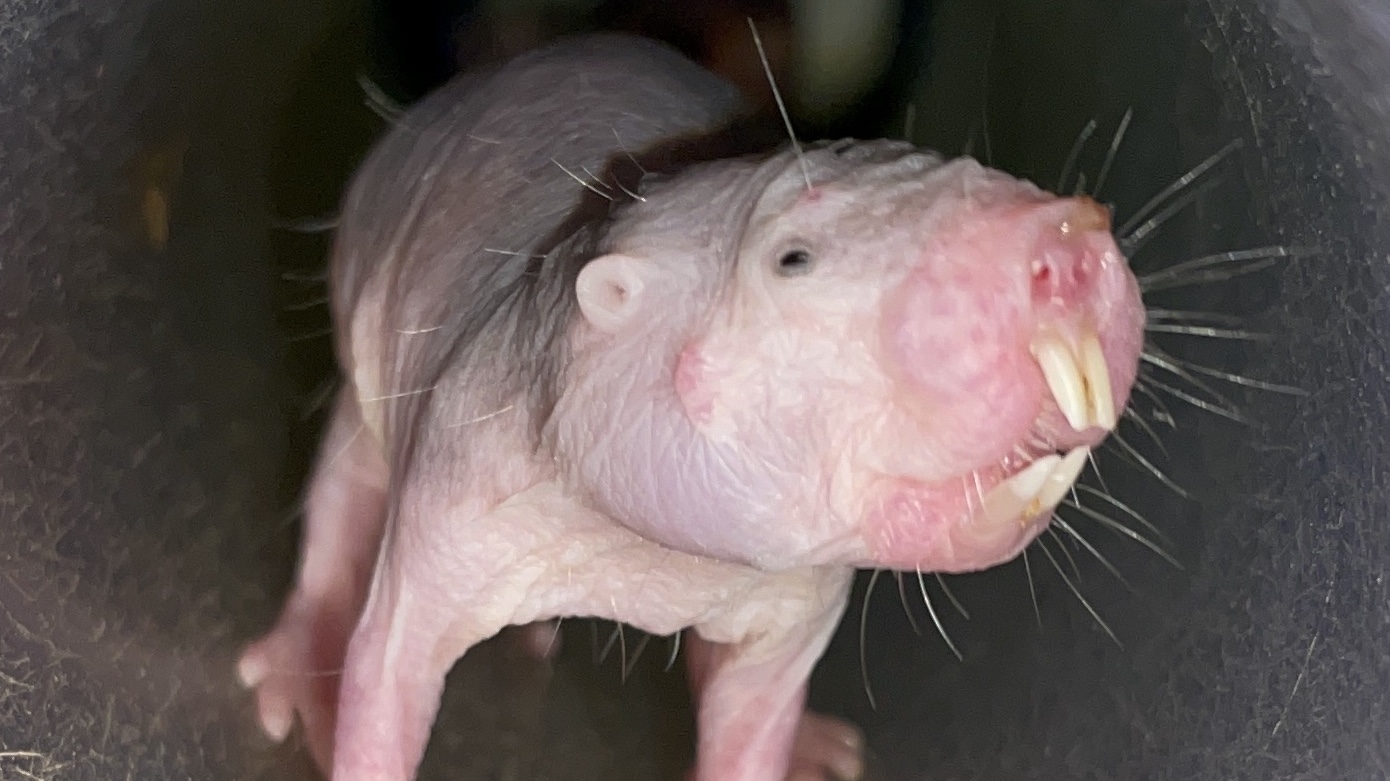 Evolution & Behaviour
Evolution & Behaviour
Notes from underground: naked mole-rats and vocal dialects
Cooperation relies on shared communication systems, such as language. We can now add one of the planet’s most cooperative rodents, the naked mole-rat, to the short list of species that use vocal dialects to help identify group members. Using a combination of computer algorithms and behavioral studies, we recently identified some of the special features of naked mole-rat communication.

Naked mole-rats are highly unusual rodents. These long-lived, cold-blooded mammals are immune to certain types of pain, highly resistant to cancer and able to survive up to 18 minutes without oxygen. They have a highly cooperative social lifestyle, rare among mammals but common in insects (e.g. bees, wasps and ants). Among their many curiosities, naked mole-rats are prolific vocalizers. Since they were first observed in the wild, reports of naked mole-rats abound with descriptions of near-constant chirping, peeping, and grunting. In a recent study from our group in Berlin, we were motivated by a simple question: what does all this noise mean?
Perhaps somewhat surprisingly for a subterranean rodent, the naked mole-rat uses at least 25 distinct vocalization types. We decided to simplify our investigation by looking at the most common vocalization, the soft chirp, which they use as greeting call. We recorded more than 30,000 soft chirps from more than 100 naked mole-rats living in laboratory colonies in Berlin, Germany and Pretoria, South Africa. We then examined the features of these sounds, such as duration, frequency and pitch. We hypothesized these features might contain information about the rat’s identity, age, sex or even colony membership, thus facilitating the elaborate social organization and extreme cooperation that exist in naked mole-rat societies.
To test this hypothesis, we used machine learning tools, a set of computer algorithms that can “learn” to classify objects such as sounds. Once trained using a set of known sounds, the algorithms can be used to predict the identity of novel sounds (e.g. telling us with what probability a soft chirp can be assigned to one mole-rat or another). If a machine learning algorithm could “learn” the identity of a mole-rat from the extracted sound features, then the naked mole-rats themselves might be able to use the same information to identify one another. Indeed, we confirmed that naked mole-rat soft chirps could be used to reliably identify individual naked mole-rat vocalizers, and which colony they originate from. Yet, a naked mole-rat is not a computer, and whether or not the animals actually used these sound features for identification required confirmation.
We decided to ask the mole-rats directly in a series of behavioral experiments: we presented animals with soft chirps recorded from their home colony or foreign colonies, or with artificially-generated ones. Naked mole-rats preferentially responded to greetings with their own soft chirp when hearing home colony dialects, but not foreign colony dialects. With artificial soft chirps, we tested individual sound features or combinations of features, and demonstrated that only two frequency-based features were sufficient to recapitulate behavioral preference. Naked mole-rats are therefore indeed able to recognize colony-specific vocal dialects.
But how do they know which dialect to use? We wondered if like in humans, these dialects might be learned early in life, shaped by early acoustic environments. In a next set of experiments, we moved young pups from their home colony to a foreign colony shortly after birth, and we followed their vocal development for the first year of life. If dialect usage is purely genetic, we predicted fostered naked mole-rat pups would grow-up using the dialect of their birth colonies. Instead, all adopted pups used the vocal dialect of their foreign adoptive colonies, providing support for environment-based learning. These results raise some interesting future questions: How flexible is this vocal learning? Can naked mole-rats learn multiple dialects? Can they learn new dialects later in life? And, how precisely do they learn?
Some hints regarding the plasticity of vocal dialects in adults came from an unexpected source. Naked mole-rat colonies remain stable if the queen is strong, but the loss of the queen can throw the colony into upheaval. While we were monitoring vocal dialects over several years, one colony lost two queens directly after one another. In each case, the death of the queen was followed by a period of anarchy characterized by colonial in-fighting. We found that without the queen, the colony dialect became increasingly unrecognizable, with individual mole-rats demonstrating more variability in their soft chirp features. When a new queen ascended, the colony dialect stabilized again and became more cohesive. Together, these new findings demonstrate that the vocal culture of naked mole-rats has the potential to provide new insights into how vocal communication shapes social dynamics.
Original Article:
Barker, A. et al. Cultural transmission of vocal dialect in the naked mole-rat. Science 371, 503-507 (2021).Edited by:
Dr. Quentin Laurent , Senior Scientific Editor
We thought you might like
Human's impact on the behavior and cultural diversity of chimpanzees
Nov 12, 2019 in Evolution & Behaviour | 3.5 min read by Ammie K. KalanMore from Evolution & Behaviour
Cicada emergence alters forest food webs
Jan 31, 2025 in Evolution & Behaviour | 3.5 min read by Martha Weiss , John LillSize does not matter: direct estimations of mutation rates in baleen whales
Jan 29, 2025 in Evolution & Behaviour | 4 min read by Marcos Suárez-MenéndezThe Claws and the Spear: New Evidence of Neanderthal-Cave Lion Interactions
Jan 22, 2025 in Evolution & Behaviour | 3.5 min read by Gabriele RussoA deep-sea spa: the key to the pearl octopus’ success
Jan 20, 2025 in Evolution & Behaviour | 3.5 min read by Jim BarryFeisty fish and birds with attitude: Why does evolution not lead to identical individuals?
Aug 31, 2024 in Evolution & Behaviour | 3 min read by Lukas Eigentler , Klaus Reinhold , David KikuchiEditor's picks
Trending now
Popular topics


